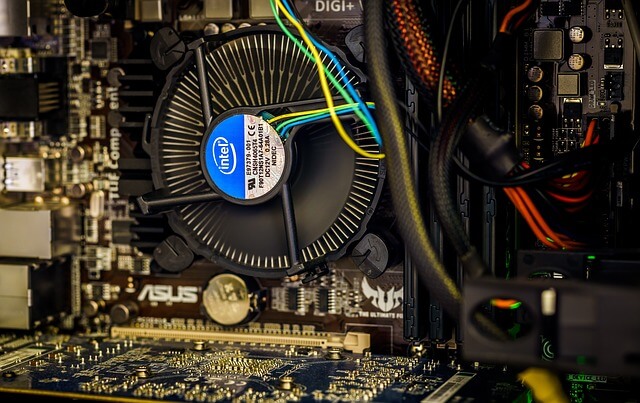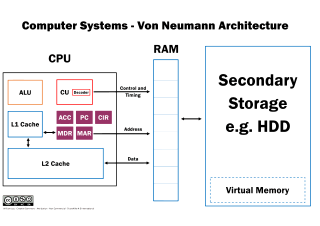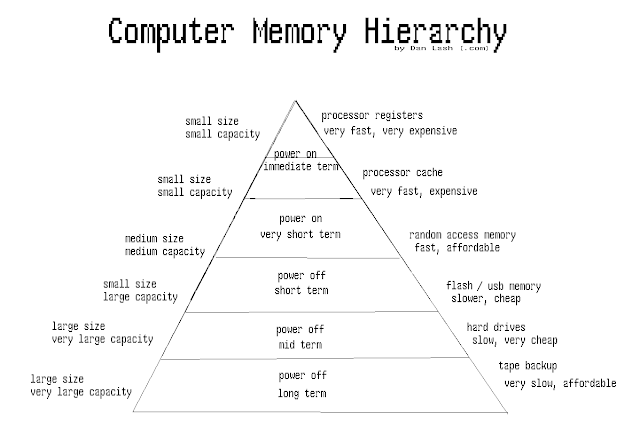Computer Architecture - Complete Information
Each machine has its own, unique personality which probably could be defined as the intuitive sum total of everything you know and feel about it. This personality constantly changes, usually for the worse, but sometimes surprisingly for the better...—Robert M. Pirsig, Zen and the Art of Motorcycle Maintenance
 |
| What are types of computer architecture - Definitions & Examples | Computer Architecture Notes |
Learn all about Computer Architecture in this introductory blog for Computer Architecture Course students study in their college or University.
In this blog you will learn following:
Table of Content:
- What do you mean by computer architecture?
- What are the types of computer architecture?
- What is Purpose Computer architecture Study?
- Memory hierarchy in computer architecture?
- Memory Access Methods in Computer Architecture
- Memory Main Concept in Computer Architecture
- How to Become a Computer Architect
What do you mean by computer architecture?
Computer architecture in computer engineering is a collection of laws and techniques describing software systems features, organisation, and execution. Some architecture terms describe it as defining a computer's capacities and programming model, but not a specific execution.
A computer system is basically a machine that simplifies complicated tasks. Input device, output unit, storage unit, arithmetic logic unit, control unit and so forth are various elements in the architecture of the computer system.
The flow of data shifts from the input device to ALU. The recorded data is also moving from ALU to the output device. The data is continuously moving away and forth from the memory device to ALU. This is because the recorded data is calculated on before being accessed again. The control unit controls all other equipment as well as their data.
If we trust the word architecture, we think in building a house or structure. In view of the same idea, the computational architecture involves software building and all that enters a computer scheme. Three main computer architecture categories exist.
All of these components go together in a certain order and need to be created in a model in order to work properly.
What is Computer Architecture?
Computer architecture is a standard that describes how hardware and software systems communicate to produce a platform or scheme for a computer.
 |
| What are types of computer architecture - Definitions & Examples |
If we trust the word architecture, we think in building a house or structure. In view of the same idea, the computational architecture involves software building and all that enters a computer scheme. Three main computer architecture categories exist.
- System design–This involves all hardware components such as CPU, information processors, multiprocessors, memory controllers and immediate access to memory. This portion is the computer system itself.
- Instruction set architecture–This includes the functions and capabilities of the CPU, the language of programming of the CPU, data formats, types of processor registers and instructions used by computer programmers. This component is the software that lets it function like Windows or Photoshop or the like.
- Microarchitecture–This describes the component or information routes for information handling and storage and how to implement them in the design of the instruction set. These may include equipment for DVD storage or comparable systems.
All of these components go together in a certain order and need to be created in a model in order to work properly.
The details of all computer units are as follows:
Input Unit:
The input device can provide the computer system with internal data. Thus, the computer is essentially connected to the internal environment. It needs data from input devices, turns it into the instruments language and feeds it into the system. Keyboard, mouse, etc. are the most often used entry devices.
Output Unit:
The production scheme provides the results of the computer process for clients, which means that the software is linked to the outside environment. The audio or video sort is the most common input data. Different output devices include monitors, printers, speakers, headphones etc.
Storage Unit:
There are many components in the storage system used for storage of information. It is usually divided into main and secondary storage. Primary storage is also regarded as the main memory, which can be accessed straight by the CPU. No secondary or internal storage is accessible straight to the CPU. The secondary data for processing must be transferred into primary storage before the CPU can use it. A large amount of data is included in secondary storage continuously.
Arithmetic Logic Unit:
All the computer system calculations are carried out by the arithmetic logic unit. It can perform operations like adding, subtracting, multiplying, dividing, etc. The control unit transfers data from the memory system to the arithmetic logic unit when calculations are necessary. The central processing unit comprises of the logic system arithmetic and the control unit.
Control Unit:
This unit controls all other parts of the computer system and is therefore known as its central nervous system. It moves information to the central processing unit from the storage unit and vice versa. The system also specifies how the memory, input devices, arithmetic logo unit, etc. should work.What are the types of computer architecture?
Von Neumann Architecture
Early computer programs were difficult to wire. To reprogram a computer, the hardware buttons were changed manually, with potentially lengthy errors remaining. Only for data storage computer memory was used.
 |
Von Neumann Architecture |
John von Neumann suggested that data and programs should be collected in memory. This is now called the Von Neumann architecture. The main device we call the CPU gathers memory-enabled programs. The programs and data are essentially represented in memory in the same way. The program is only encoded with data of special importance. The main critique of this approach is that safety problems can be encountered and vice versa, when directions can be manipulated as data.
The processor that performs this model is a Von Neumann microprocessor:
- Fetch:
- An instruction and the necessary data are obtained from memory.
- Decode:
- The instruction and data are separated, and the components and pathways required to execute the instruction are activated.
- Execute:
- The instruction is performed, the data is manipulated, and the results are stored.
This pattern is typically implemented by separating the task into two components, the control, and the datapath.
Control
The control unit reads the instruction, and activates the appropriate parts of the datapath.
Datapath
The datapath is the route of the microprocessor. The command buttons of the control unit allow the data to be manipulated in specific, as the data move in multiple parts of the datapath according to the instructions. The data path includes the data transformation loop and the provisional data storage system. It involves ALUs which can convert data through the addition, subtraction, logic AND, OR, reversal and modification of the operations.
Harvard Architecture
The memory of Harvard's Architecture based computer system is divided into two discrete parts.
These two parts are:
The two distinct memories occupy distinct memory modules in a pure Harvard system, and instructions can only be performed from the memory of the instructions.
These two parts are:
- Information
- Instructions
The two distinct memories occupy distinct memory modules in a pure Harvard system, and instructions can only be performed from the memory of the instructions.
Many DSPs are modified Harvard architectures, designed to simultaneously access three distinct memory areas: the program instructions, the signal data samples, and the filter coefficients (often called the P, X, and Y memories).
In theory, such three-way Harvard architectures can be three times as fast as an architecture of Von Neumann that is forced to read the instruction, the data sample, and the filter coefficient one by one.
Modern Computers
The recent variants, though with "Harvard-like" features, are nonetheless non-Harvard pcs, especially Intel x86-based ISA-based pcs. The same RAM areas contain all information, program guidelines and data. However, a modern feature called "pages" allows physical memory to be segmented into "pages" large memory blocks. Each page may be directions or information but not both.
Modern embedded computers, however, are usually focused on Harvard architecture. Instructions are placed in a different memory compartment and the microprocessor has no manner of exchanging information and directions.
RISC and CISC and DSP
What are RISC in Computer Architecture?
In the past, a complex set of CISC computers has been the first ISA (Instruction Set Architecture) and a small set of instruction computers (RISC) has been the second type. RISC phones typically have a small ISA but a common misunderstanding is to create it with faster hardware. Indeed, the RISC scheme has "decreased commands," in that it requires very little time for every command to execute. CISC schemes have more instructions for the extra flexibility and normally pay a heavy efficiency penalty. It is a common misunderstanding.What are CISC Systems in Computer Architecture?
CISC systems actually have "complex instructions" in the sense that it takes a long time to execute at least one instruction— for example, the "double indirect" addressing mode inherently requires two memory cycles to execute, and a few CPUs have a "string copy" instruction that may require hundreds of memory cycles to execute. MIPS and SPARC are examples of RISC computers. Intel x86 is a CISC software instance.
What are Microprocessor Components?
Microprocessor Components
Some of the common components of a microprocessor are:
- Control Unit
- I/O Units
- Arithmetic Logic Unit (ALU)
- Registers
- Cache
What is Purpose Computer architecture Study?
The objective is to create a system that maximizes effectiveness and ensures low costs relative to expected production while preserving controlled energy consumption, and which is also highly precise. For this intent, many components, including instruction set layout, functionality, logic and implementation, shall be considered. The design, packaging, power and cooling of integrated circuits are included in the implementation. Optimization of design requires familiarity with compilers, operating and storage logic design schemes.
The key objective to study computer architecture is:
The key objective to study computer architecture is:
- Maximum Efficiency from a System
- Effectiveness and Low cost for System design
- Precision in design of computer architecture.
- Optimization of Circuit for advancements.
Memory hierarchy in computer architecture
The memory can be divided into 5 hierarchies in a laptop according to the speed and application. The processor can move from one point to another, depending on its requests.
The five hierarchies in memory include records, cache, primary memory, magnetic disks and magnetic tapes.
The first three hierarchies are volatile memories, which means that they automatically release their stored data when no energy is available.
Although the two last hierarchies are not volatile, they keep the data constantly.
 |
Memory hierarchy in computer architecture
|
The memory hierarchies mainly include different storage devices in the computer system. Most PCs have been built with extra storage to function more powerfully than main memory capacity. A computer memory structure is the following hierarchy memory diagram. The hierarchy of memory layout is divided into two types of primary (inner) memory and secondary (external) memory.
Primary Memory
The primary memory, which is immediately accessible from the processor, is also considered internal memory. This memory contains the main, cache and CPU registers.
Secondary Memory
The secondary memory is considered as the external memory and is available from the processor via an input / output unit. It has an optical, electric and metal paper file in this memory.
Advantages of Memory Hierarchy
It follows that a memory hierarchy is needed.
Memory allocation is simple and cost-effective inner removal The data can be spread over all licenses that require swapping and pre-paging.
Finally, we can suppose that the above information is mainly used to decrease bit prices, access frequency and the capacity to increase access time. So the designer is able to meet the requirements of its clients how long they need these characteristics.
Here's a issue for you, OS hierarchy of memory?
Memory Access Methods
Each kind of memory is a collection of different memory locations. You must first find the data from any database and read the data from the machine's location.
The techniques for accessing data from memory places are
as follows:
as follows:
Random Access:
Primary memories are random access memories with a unique amount in each memory. This unique address can be used to access any memory location in any order in the same amount of time.
Sequential Access:
This allows sequential or ordered access to the memory.
Direct Access:
In this mode, documents with a separate reading / writing heading are used to collect information.
Memory Main in Computer Architecture
The main memory is called the CPU's memory unit, auxiliary memory and cache memory. The main memory. It is the main memory device of the computer system. It's a large and fast storage system used to store data in software operations. The primary memory are RAM and ROM, with the important share of the integrated RAM chips.
RAM:
Random Access Memory DRAM: Dynamic RAM, consisting of condensers and transistors, must be refreshed every 10~100 ms. It is faster and cheaper than SRAM.
SRAM:
Static RAM, has a six-cell transistor circuit and maintains information until it is switched off.
NVRAM:
Then comes Non-volatile RAM retains data even when turned off.
E.g. : Flash memory.
E.g. : Flash memory.
ROM:
It's non-volatile and more like constant stocking of data, read Memory only. It also stores the bootstrap loader when the device is activated and the operating system is started. Some commonly used ROMs are PROM(Programmable ROM), EPROM(Erasable PROM) and EEPROM(Electrically Removable PROM).
How to Become a Computer Architect
In order to become a computer architect, often called a computer network architect, the candidate must hold at the minimum a B.Sc in Computer Science, Engineering, Data Systems or an related industry.
Computer-based fields provide the best programmes, both of which are crucial for the computer architects, for the students with the most practical knowledge in data base layout or network security. These classes also teach different methods used by students in separate networks.
Computer-based fields provide the best programmes, both of which are crucial for the computer architects, for the students with the most practical knowledge in data base layout or network security. These classes also teach different methods used by students in separate networks.
Some students decide to complete the MBA (Master of Information System Company Management). The advantages of this program are computer-related and business courses. Even after the degree, candidates may have to work with IT technologies for at least five years before being employed as a computer architect.
Some computer architects become directors of computers and technologies after adequate knowledge has been gained.
Some computer architects become directors of computers and technologies after adequate knowledge has been gained.






0 Comments
Your comments and interesting view make our day!